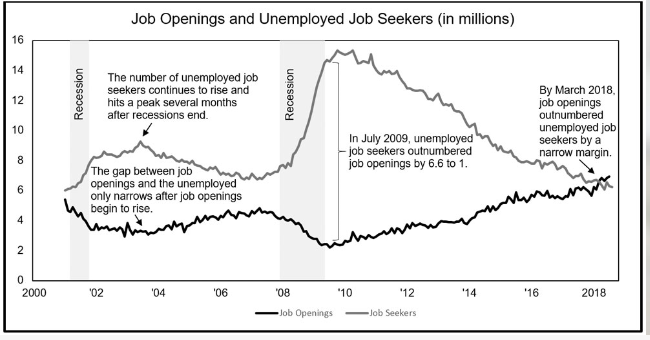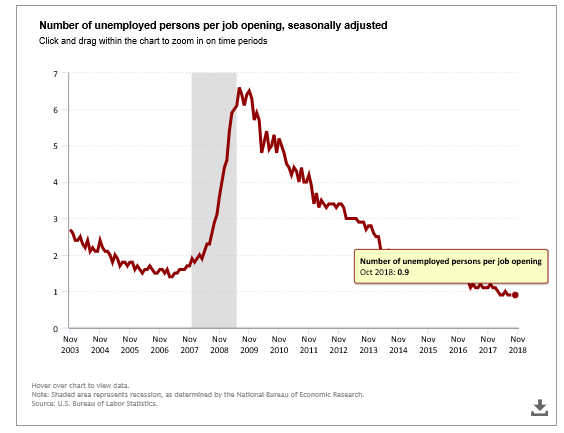The US Job Market Is Tighter Today Than It Was Just Before 2008-09 Financial Collapse
When it comes to the monthly labor force statistics, the unemployment rate and the number of unemployed are widely followed indicators that are regularly reported in the media.
Unfortunately, less attention is paid to the US Department of Labor data which tracks monthly labor force turnover -- job openings, hires, quits, layoffs, and discharges. In this case, the data source is the Job Openings and Labor Turnover Survey or (JOLTS).
The turnover data dynamically tracks the flow of workers between the different labor force states -- employed, unemployed, and out of the labor force.
The advantage of the labor force turnover data is that it allows a fuller overview of the tightness of the job market by allowing comparisons of the number of unemployed seeking work and the number of unfilled job vacancies.
Based on recent data, there is little doubt that in the current anti-immigration era, that the US job market is facing serious worker shortages since the number of job openings exceeds the number of job seekers.
As one of the following charts illustrates, in the wake of the last recession, (i.e. back in July of 2009), there were 6.6 job seekers for every job vacancy which needed to be filled.
As of last October, the ratio fell to 0.9. That is, there were more unfilled jobs in October of 2018 than workers seeking a job.
In fact, jobs openings have exceeded the number of unemployed workers available to fill those jobs since March of last year. March 2018 also marked the first-time job openings exceeded the number of unemployed workers since the BLS began tracking this data in December 2000.
In other words, both charts indicate that the US job market is tighter today than it was back before the financial collapse in 2008-09.
In December 2018 when the last recession began, there were 1.8 times more unemployed than vacant jobs, compared to the recent 0.9 recent ratio.
Of course, this analysis does not answer why, if the economy is actually beyond full employment, wage growth remains so modest?
The US Job Market Has Tightened Since The End Of The Financial Crisis


Disclosure: None.



